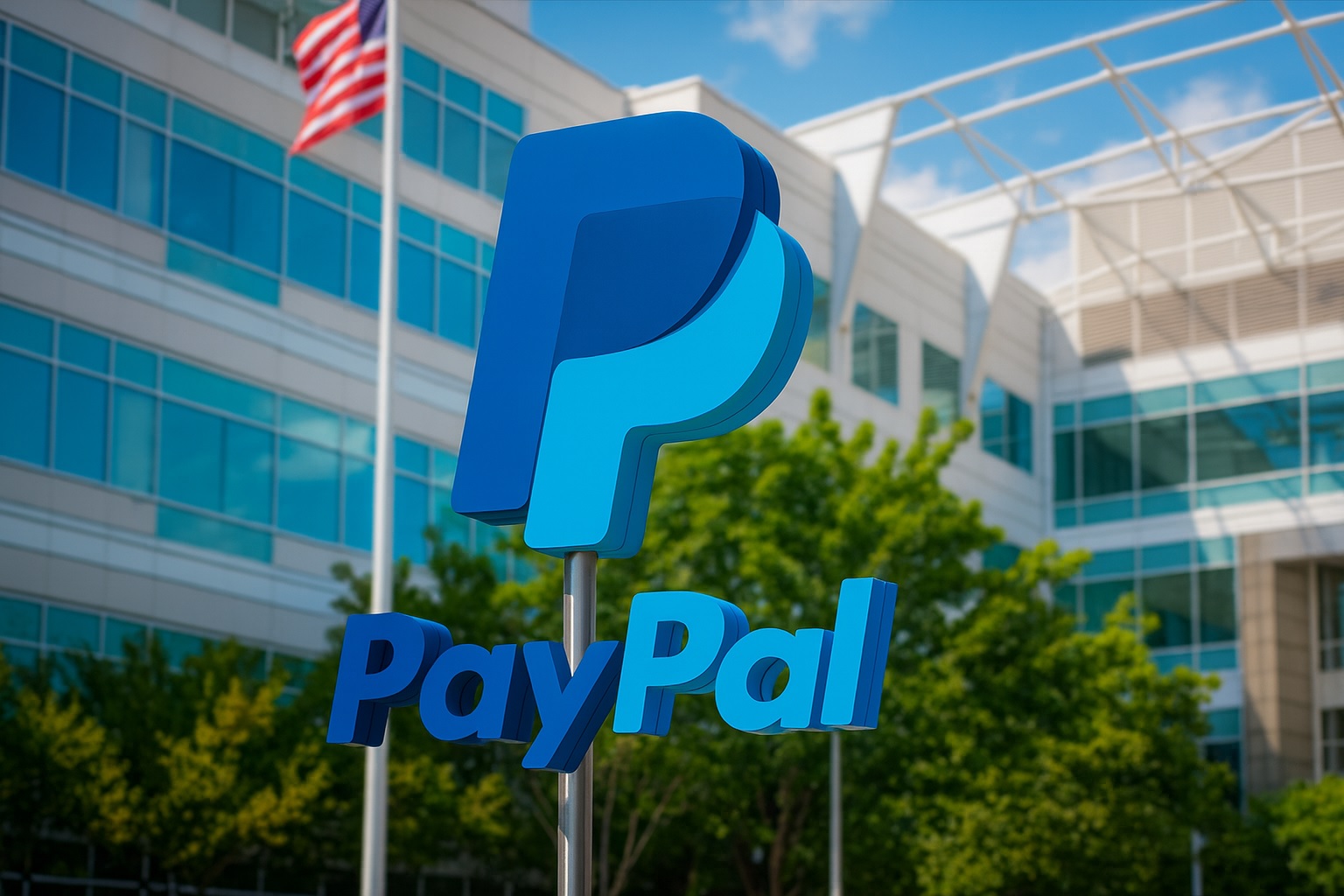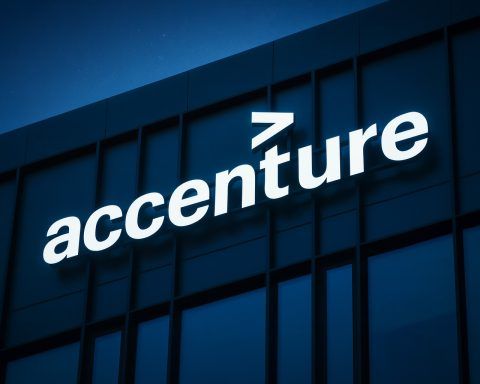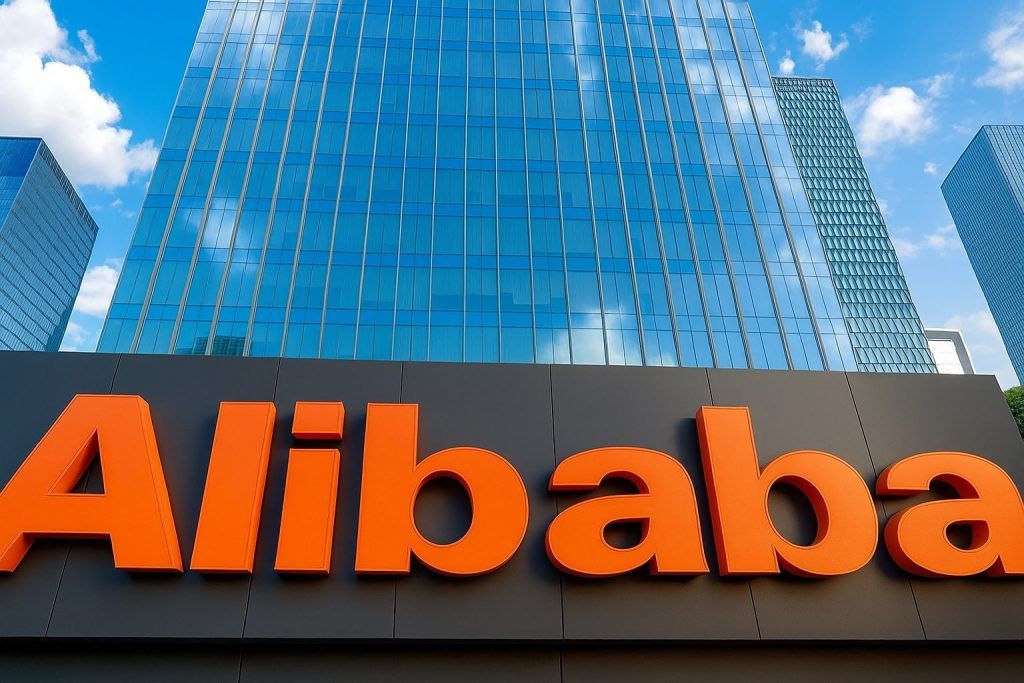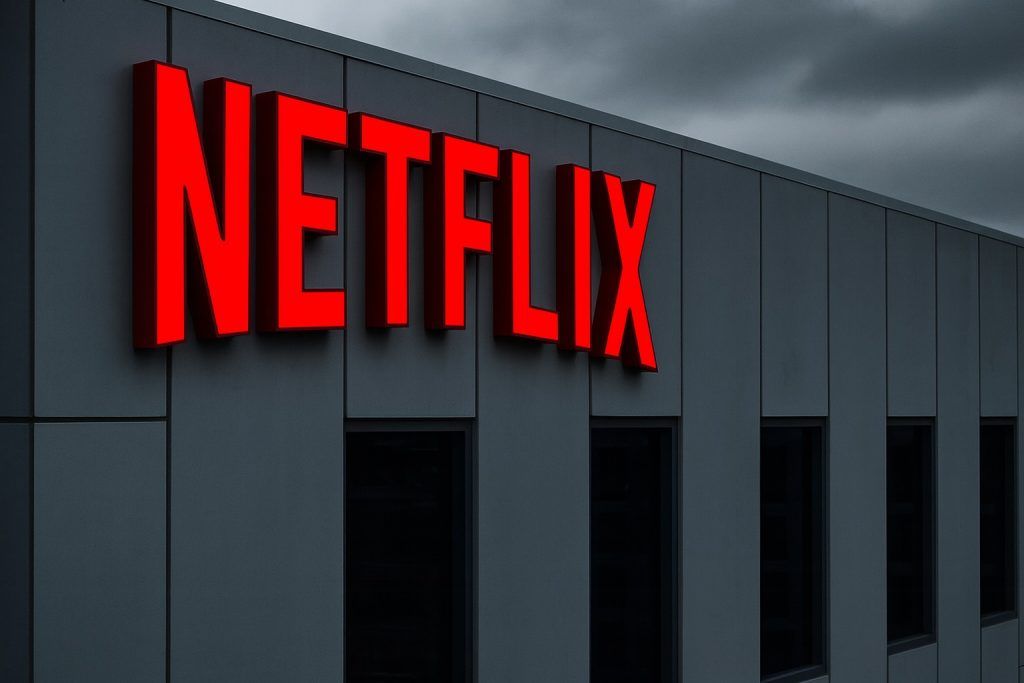As U.S. markets get ready to reopen on Monday, November 17, 2025, PayPal Holdings (NASDAQ: PYPL) is stepping into the new week at a tricky crossroads: the business is improving, the strategy is clearer, but the stock is under pressure again after a fresh analyst downgrade and ongoing skepticism about its long‑term growth story. [1]
If you’re watching PayPal stock before the bell on Monday, here’s what you need to know about its latest earnings, dividend, AI partnerships, restructuring plans, and the key risks and catalysts that could shape trading in the days ahead.
1. Where PayPal Stock Stands After Friday’s Sell‑Off
On Friday, November 14, PayPal shares closed around $62.81, down about 3.9% on the day after DBS Bank cut its price target from $75 to $70 while maintaining a Hold rating. Trading volume spiked to roughly 21.9 million shares, about 79% above the recent average, underscoring how sensitive PYPL still is to analyst sentiment. [2]
Despite a strong reaction to its Q3 earnings and OpenAI partnership earlier in the month, PayPal stock has fallen about 14% since its October 28 earnings report and is down roughly 26% year‑to‑date, even as the S&P 500 has gained around 14% in 2025. [3]
At Friday’s close, PayPal trades at roughly 12–13× trailing earnings and around 12× its updated 2025 EPS guidance, putting it firmly in “value tech” territory for many analysts. [4]
Wall Street’s overall stance is cautious:
- Consensus rating: “Hold”, with 15 Buy, 18 Hold and 4 Sell ratings.
- Consensus 12‑month price target: about $82.56, implying sizeable upside if management delivers on its plan. [5]
That disconnect between low valuation and still‑ambitious targets is exactly what makes Monday’s open interesting.
2. Q3 2025: Solid Beat, Slower User Activity
PayPal’s Q3 2025 results, released on October 28, were objectively strong:
- Revenue: ~$8.4–8.42 billion, up about 7% year‑on‑year, and ahead of analyst estimates around $8.2 billion. [6]
- Non‑GAAP EPS:$1.34, beating forecasts near $1.20–$1.21 and growing roughly 12% from a year earlier. [7]
- GAAP EPS: about $1.30, up more than 30% year‑on‑year, helped by both margin improvements and share repurchases. [8]
Operationally, the quarter showed both progress and pressure:
- Total payment volume (TPV): around $459 billion, up 7–8% YoY. [9]
- Branded checkout & consumer experiences: volume up roughly 10% YoY, still the core profit driver. [10]
- Venmo revenue: up 20%+ YoY, with Venmo debit actives climbing more than 40%, signaling deeper monetization of its younger user base. [11]
- Buy Now, Pay Later (BNPL): volume surged over 20% YoY; management expects 2025 BNPL volume around $40 billion, positioning PayPal as a leading U.S. installment‑payments player. [12]
- Active accounts: about 438 million, only 1% higher than a year ago.
- Transactions per active account: down roughly 6%, and overall transaction count declined about 5%, reflecting PayPal’s deliberate move away from low‑margin, unbranded processing volume. [13]
So, the Q3 story is nuanced: revenue, EPS and high‑value volumes are growing, but user engagement metrics are under modest pressure as PayPal trims the less profitable parts of its business.
3. New Dividend Changes the Story for PYPL
One of the most important headlines for long‑term investors: PayPal has started paying a dividend for the first time in its history.
- The board approved a quarterly cash dividend of $0.14 per share, payable on December 10, 2025 to shareholders of record on November 19, 2025. [14]
- At Friday’s share price, that works out to a yield of roughly 0.9% and reflects a targeted payout ratio around 10% of non‑GAAP net income. [15]
Several analysts have framed the dividend as a signal of confidence in PayPal’s cash‑generation and margin trajectory, and as an extra lever for total returns alongside ongoing share repurchases. [16]
Going into Monday’s session, dividend‑oriented investors may continue reassessing PYPL—not yet as an income stock, but as a cash‑rich fintech willing to share more of its profits with shareholders.
4. Guidance: What Management Now Promises for 2025
Along with Q3 results, PayPal raised its full‑year 2025 outlook:
- Full‑year non‑GAAP EPS: now $5.35–$5.39, up from prior guidance of $5.15–$5.30, and above Wall Street estimates that hovered around $5.24. [17]
- Q4 2025 EPS guidance:$1.27–$1.31. [18]
Management is also sticking with the broader growth ambition outlined at Investor Day 2025:
- At least 5% transaction‑margin dollar growth in 2025, rising to high single‑digit by 2027.
- Non‑GAAP EPS growth of 6–10% in 2025, stepping up to low‑teens or better by 2027 and 20%+ over the longer term. [19]
These targets underpin the bullish narrative that PYPL is priced like a low‑growth financial stock but managed like a growth‑at‑a‑reasonable‑price (GARP) tech name. Some commentators on platforms like Seeking Alpha argue that a ~12× earnings multiple looks too cheap if management even comes close to these long‑term EPS ambitions. [20]
5. Analyst Downgrade, Insider Selling and Wall Street’s Split View
The Friday sell‑off stemmed from DBS’s decision to trim its price target to $70 and keep PayPal at “Hold.” The downgrade came despite the earnings beat and raised guidance, suggesting that some analysts see the recent rally as adequately pricing in near‑term good news. [21]
Broader sentiment is mixed:
- Neutral camp: Firms like Citi have maintained Neutral ratings, pointing to flat‑to‑slow branded checkout growth, competitive pressure in key markets like Germany, and cross‑border friction in U.S.–China flows, even as profitability improves. [22]
- Bullish camp: A recent Motley Fool–syndicated piece on Nasdaq argued that PayPal “could be the next 10× fintech stock” because its most exciting growth levers—AI commerce, Venmo monetization, and stablecoins—aren’t fully reflected in current numbers or valuation. [23]
- Skeptics: Some commentary on Yahoo Finance and elsewhere stresses that simply hiring a strong CEO hasn’t yet been enough to overcome structural challenges such as fierce competition from Apple Pay, Cash App, Adyen, and Stripe, or to reignite user growth. [24]
Adding to the caution, insiders have been selling stock:
- EVP Aaron Webster sold 9,282 shares in November while keeping ~35,700 shares.
- CAO Chris Natali sold 1,374 shares in late October.
- In aggregate, insiders sold about 36,000+ shares worth roughly $2.5 million over the past 90 days, and insiders own only ~0.08% of the float. [25]
Insider selling isn’t automatically bearish—it can reflect diversification or tax planning—but in a stock already struggling to regain trust, it’s another factor traders will keep in mind Monday morning.
6. CEO Alex Chriss and the “Self‑Disruption” Strategy
CEO Alex Chriss, who took over in 2023, has spent much of 2024–2025 reshaping PayPal’s leadership team, culture and cost structure. [26]
A few key elements of his strategy:
- “Granddaddy of fintech” must disrupt itself: Chriss has described PayPal as a legacy giant that now has to shed old decisions and rebuild around today’s customer needs, from small businesses to Gen Z debit users. [27]
- Focus on small businesses: He emphasizes that small businesses are the “underdogs” of the economy and feel downturns first, so PayPal is leaning into lending, working capital and tools like Fastlane checkout to boost their resilience and conversions. [28]
- AI “smart wallet” vision: PayPal is rolling out AI‑powered wallets that help customers choose the best funding source—maximizing rewards and minimizing anxiety about making sub‑optimal payment decisions—based on individualized data (with consent). [29]
- Tech overhaul & restructuring: A three‑year, $300 million restructuring program is under way to re‑engineer infrastructure, exit certain data centers and shift more workloads to the cloud, aiming for better speed, flexibility and lower long‑term costs. [30]
In Q2 2025, PayPal already reported 5–6% TPV growth, revenue up 5% and a 19% drop in sales and administrative expense, suggesting these changes are starting to support margins. [31]
However, some governance watchers have raised questions about Chriss’s limited consumer‑market background and how quickly his team can balance growth initiatives with tight cost discipline. [32]
7. AI, ChatGPT and “Agentic Commerce”: A Big Swing
The OpenAI partnership is arguably PayPal’s highest‑profile growth lever right now.
On October 28, PayPal announced it will adopt the Agentic Commerce Protocol (ACP) to power Instant Checkout inside ChatGPT, effectively turning PayPal into one of the default payment rails for AI‑driven shopping. [33]
Key pieces of the deal:
- ChatGPT users will be able to complete purchases in just a few taps using PayPal, with access to PayPal’s buyer and seller protection, dispute resolution, and post‑purchase services. [34]
- Tens of millions of PayPal merchants—from small online shops to global brands—will have their product catalogs made discoverable inside ChatGPT over time, without having to build separate integrations for each AI platform. [35]
- PayPal is also supporting OpenAI Instant Checkout via a delegated payments API, handling card processing behind the scenes for merchants. [36]
- The company is expanding its own AI usage, rolling out ChatGPT Enterprise to its 24,000+ employees and using OpenAI’s APIs to speed up coding, experimentation and internal productivity. [37]
The announcement helped send PayPal shares up about 8–13% immediately after earnings as investors reacted to both the numbers and the AI story. [38]
Heading into Monday, traders are asking two main questions:
- Revenue impact: How quickly can ACP and ChatGPT commerce move from “cool demo” to measurable GMV and fee revenue?
- Moat potential: Does being an early, deeply integrated payments partner with OpenAI give PayPal a defensible edge over rivals as AI commerce scales?
Those answers will likely unfold over several quarters, not days—but expectations around AI are already baked into how PYPL trades.
8. Venmo, BNPL and Everyday Payments: Where the Growth Is
PayPal’s consumer growth engines are increasingly Venmo, BNPL and everyday spending use cases rather than just traditional online checkout.
Venmo’s evolution
- Venmo’s revenues grew 20%+ in Q3, and Venmo debit card usage jumped 40%+, reflecting its appeal among younger, debit‑first users. [39]
- A major new partnership with Bilt Rewards will allow Venmo users to pay rent, mortgages and neighborhood merchants starting in early 2026, while earning Bilt points redeemable for travel or down payments. [40]
That Bilt integration turns Venmo into a hub for some of the largest recurring payments in consumers’ lives, which could significantly expand volume, retention and monetization over time.
Separately, Venmo has partnered with the NCAA to combat harassment of student‑athletes on the platform, including a dedicated reporting hotline and proactive monitoring of abuse linked to sports betting. [41]
For investors, that shows Venmo trying to balance growth and trust, but it also highlights reputational and regulatory risks in the social‑payments space.
BNPL momentum
PayPal’s BNPL business is now a serious contender:
- BNPL volumes grew more than 20% YoY in Q3, and management expects about $40 billion in BNPL volume in 2025, potentially overtaking Affirm in U.S. installment volume. [42]
- PayPal offers 5% cash back on some Pay Later purchases, a richer incentive than many rivals and a lever to attract value‑conscious consumers in a stubbornly inflationary environment. [43]
BNPL is higher‑risk than standard card processing—but if managed prudently, it could be a material earnings contributor and reinforce PayPal’s position in checkout.
9. Crypto, PYUSD and the Stablecoin Bet
Another pillar of the Chriss strategy is integrating crypto and stablecoins directly into PayPal’s network.
PYUSD rewards & use cases
In April, PayPal launched a 3.7% annual rewards program for users who hold its U.S.‑dollar stablecoin PYUSD inside PayPal or Venmo. Rewards are paid in PYUSD and can be used for shopping, peer‑to‑peer transfers, or fee‑free remittances via Xoom. [44]
The idea is to make PYUSD a commerce‑ready asset, not just a trading token—one that can fund online purchases, cross‑border payments and on‑chain transfers on networks like Ethereum and Solana. [45]
Stellar and “Pay with Crypto”
In June and July, PayPal layered on two more crypto initiatives:
- Plans to bring PYUSD to the Stellar network, pending regulatory approval, to enable faster, lower‑cost cross‑border payments and new “PayFi” working‑capital products for small businesses. [46]
- A “Pay with Crypto” solution that lets merchants accept 100+ cryptocurrencies via partner wallets like Coinbase and MetaMask, with near‑instant conversion to PYUSD or fiat and up to 90% lower transaction fees than typical international card processing. [47]
These moves position PayPal as a bridge between traditional payments and digital assets, but they also carry regulatory, technological and reputational risk—something PayPal itself emphasizes in detailed risk disclosures about PYUSD and digital assets. [48]
For Monday’s session, crypto isn’t the main trading driver—but for multi‑year investors, it’s a key part of the optionality embedded in PYPL’s valuation.
10. PayPal World, Cross‑Border Ambitions and Restructuring
Global commerce is another big swing:
- PayPal World, announced in July, is a new cross‑border platform designed to link PayPal with major local payment systems—including India’s Unified Payments Interface (UPI), Brazil’s Mercado Pago, Tencent’s Tenpay Global, and Venmo—so consumers can pay overseas merchants using familiar local methods. [49]
- UPI alone accounts for roughly 85% of India’s retail digital payment volume, so connecting it to PayPal World could materially expand PayPal’s reach in one of the world’s largest growth markets. [50]
- The platform is expected to go live later in 2025, with more partners to be added over time. [51]
To support these ambitions, PayPal is executing that $300 million restructuring to modernize its tech stack, consolidate data centers and shift more workloads to the cloud—aiming to cut costs and speed up product launches. [52]
Together, PayPal World, ACP/ChatGPT and PYUSD form the backbone of a thesis that PayPal is re‑architecting itself as the default wallet and settlement layer for both traditional and AI‑driven global commerce.
11. Key Risks for PayPal Stock Heading Into Monday
Before the opening bell on November 17, investors should also weigh several downside risks that remain front‑and‑center:
- Competition: Apple Pay, Cash App, Adyen, Stripe and a long tail of local wallets are eroding PayPal’s dominance in both online and in‑person checkout. Some analysts doubt PayPal can hit its 2027 branded‑checkout growth targets. [53]
- Muted user growth & engagement: Active accounts are barely growing, and transaction counts have dipped as PayPal walks away from lower‑margin volumes—raising questions about how large the long‑term user base can be. [54]
- Execution risk on restructuring: The $300M infra overhaul must deliver speed and cost benefits without disrupting service or innovation. [55]
- Regulatory & crypto risk: Stablecoin products like PYUSD depend on evolving rules and approvals (including from New York’s financial regulator), and they are not FDIC‑ or SIPC‑insured. [56]
- Macro headwinds: Shrinking basket sizes and pressure on middle‑income consumers, flagged in PayPal’s own commentary, could weigh on transaction growth if economic conditions worsen. [57]
12. What to Watch in PYPL Before and After the Bell on November 17
When markets open on Monday, here are the practical things to keep an eye on if you’re following PayPal stock:
- Pre‑market and early‑session reaction to Friday’s DBS downgrade:
Does the stock continue to drift lower as short‑term holders exit, or do value‑oriented and dividend‑focused investors start buying the dip around the low‑$60s? [58] - Volume vs. price action: Another high‑volume day with limited downside could signal capitulation and base‑building; continued heavy selling on large volume would suggest institutions are still reducing exposure. [59]
- Fresh analyst commentary: Any new notes revisiting price targets in light of the dividend, AI partnerships and restructuring could sway sentiment quickly. [60]
- Macro & tech sentiment: As a mid‑beta tech/fintech name, PYPL often trades with broader moves in growth stocks and AI‑linked narratives. [61]
Bottom Line: A Turnaround in Motion, Not Yet in the Clear
Going into November 17, PayPal stock sits at the intersection of improving fundamentals and lingering skepticism.
On one side of the ledger:
- Q3 delivered a clean beat and raised EPS guidance.
- The first‑ever dividend and ongoing buybacks underline strong cash generation.
- Big strategic swings—ChatGPT/AI commerce, PayPal World, PYUSD, Pay with Crypto, Venmo/Bilt—offer real upside if they scale. [62]
On the other side:
- Competition is brutal, user metrics are mixed, insiders have been selling, and some analysts still see PayPal’s long‑term targets as “ambitious” rather than assured. [63]
For traders and investors watching at the open on Monday, the key question isn’t whether PayPal is a good company—that’s been clear for years. It’s whether today’s price around the low‑$60s properly reflects the balance between a credible, AI‑ and cross‑border‑driven turnaround and the very real risks that it falls short.
As always, this article is informational only and not financial advice. Decisions about buying, holding, or selling PayPal stock should take into account your own risk tolerance, time horizon, and, ideally, guidance from a qualified financial adviser.
References
1. www.marketbeat.com, 2. www.marketbeat.com, 3. www.barrons.com, 4. www.marketbeat.com, 5. www.marketbeat.com, 6. www.marketbeat.com, 7. www.investing.com, 8. www.tipranks.com, 9. www.emarketer.com, 10. www.emarketer.com, 11. www.emarketer.com, 12. www.emarketer.com, 13. www.emarketer.com, 14. www.sec.gov, 15. www.sec.gov, 16. www.tipranks.com, 17. www.marketbeat.com, 18. www.marketbeat.com, 19. about.pypl.com, 20. seekingalpha.com, 21. www.marketbeat.com, 22. www.barrons.com, 23. www.nasdaq.com, 24. finance.yahoo.com, 25. www.marketbeat.com, 26. www.crowdfundinsider.com, 27. www.crowdfundinsider.com, 28. www.crowdfundinsider.com, 29. www.crowdfundinsider.com, 30. www.paymentsdive.com, 31. www.paymentsdive.com, 32. paragonintel.com, 33. newsroom.paypal-corp.com, 34. newsroom.paypal-corp.com, 35. newsroom.paypal-corp.com, 36. newsroom.paypal-corp.com, 37. newsroom.paypal-corp.com, 38. www.investopedia.com, 39. www.emarketer.com, 40. nypost.com, 41. apnews.com, 42. www.emarketer.com, 43. www.emarketer.com, 44. investor.pypl.com, 45. investor.pypl.com, 46. newsroom.paypal-corp.com, 47. about.pypl.com, 48. about.pypl.com, 49. www.reuters.com, 50. www.reuters.com, 51. www.reuters.com, 52. www.paymentsdive.com, 53. www.barrons.com, 54. www.emarketer.com, 55. www.paymentsdive.com, 56. about.pypl.com, 57. www.emarketer.com, 58. www.marketbeat.com, 59. www.marketbeat.com, 60. seekingalpha.com, 61. www.investopedia.com, 62. newsroom.paypal-corp.com, 63. www.marketbeat.com







